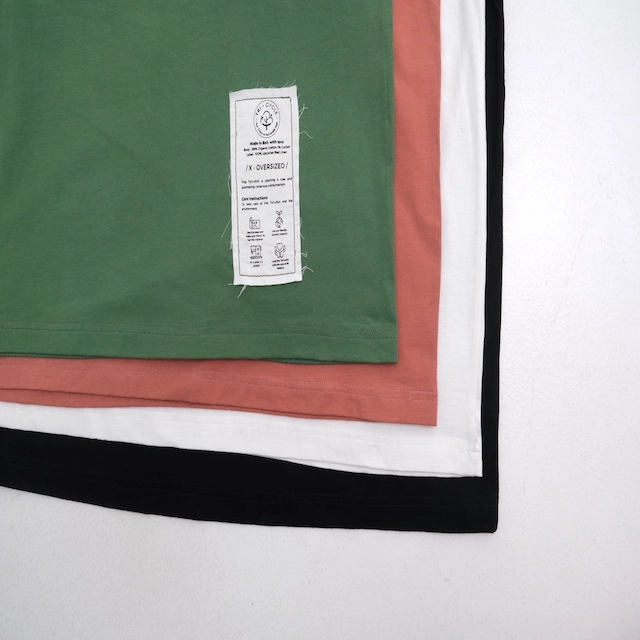
The Importance of Sustainable Clothing: A Comprehensive Overview
Sustainable clothing has gained significant traction within the fashion industry, driven by its positive impact on both the environment and society. This article delves into the crucial reasons behind the rising significance of sustainable clothing and offers insights into identifying genuinely sustainable brands.
Environmental Impact
Sustainable clothing is garnering attention due to its potential to address environmental concerns. The fashion industry stands accountable for a staggering 10% of human-caused greenhouse gas emissions and 20% of global wastewater. Surprisingly, it consumes more energy than even the aviation and shipping sectors combined. The adoption of sustainable clothing practices can combat these issues. Eco-friendly materials, waste reduction strategies, and minimised energy usage collectively contribute to curbing these detrimental impacts.
Enhancing Social Conditions
Beyond environmental considerations, sustainable clothing also serves as a catalyst for improving labour conditions within the fashion industry. Fast fashion brands often rely on inexpensive labour in developing nations, which often leads to low wages and unsafe working environments for employees. In stark contrast, sustainable clothing brands prioritize fair labour practices and safe workplaces, thereby fostering improved social conditions.
Preservation of Natural Resources
The conservation of natural resources emerges as another key facet of sustainable clothing. Cotton cultivation, for instance, demands significant water resources. It takes a staggering 7,500 to 10,000 liters of water to produce a single kilogram of cotton, equivalent to the amount needed for a pair of jeans. Additionally, conventional cotton production involves the use of pesticides and insecticides, which degrade soil quality and contribute to water pollution. Sustainable clothing brands mitigate these concerns by opting for organic cotton or recycled materials, reducing the ecological footprint of clothing production.
Mitigating Waste
The disposable nature of modern clothing contributes to an alarming waste problem. A substantial portion of garments is discarded after minimal use – 20% in the US and a staggering 50% in the UK, while in Indonesia the nation seeks to reduce 30% of the county’s waste from the source and to manage at least 70% of it responsibly by 2025. Sustainable clothing solutions target waste reduction by implementing innovative strategies right from the design stage. By doing so, they strive to eliminate waste at its source, contributing to a more sustainable fashion cycle.
Prioritizing Transparency
Transparency serves as a foundational principle for sustainable clothing brands. Transparent supply chains, manufacturing processes, and ethical practices empower consumers to make informed choices and hold companies accountable for their actions. This focus on transparency not only builds trust but also aligns with the ethical values of the sustainability movement.
Read More: Affordable Sustainable Clothing: Pros, Cons and Examples
Identifying Sustainable Brands
In addition to understanding the significance of sustainable clothing, it’s crucial to recognize how to identify authentic sustainable brands amidst a cluttered market.
1. Certifications
Seek out green certifications, which validate a brand’s commitment to sustainability through ethical worker treatment, responsible sourcing, and waste management practices.
2. Transparency
Genuine sustainable brands embrace transparency by openly sharing information about their sourcing, supply chains, and environmental impact. The willingness to admit areas of improvement underscores their authenticity.
3. Materials
Investigate the materials used by brands, with a focus on organic cotton and recycled materials. Assess their commitment to responsible fabric sourcing and eco-friendly dyeing practices.
4. Quantity
Assess the quantity of products a brand offers. Fast fashion brands tend to flood the market with new pieces daily, contributing to excessive consumption and waste. Consider brands that prioritize quality over quantity.
5. Price
Recognize that sustainable clothing often comes at a higher price point due to superior materials and ethical manufacturing practices. If a deal seems too good to be true, it might compromise sustainability principles.
Embracing a Sustainable Wardrobe for a Better Future
The multifaceted impact of sustainable clothing on our environment, society, and the fashion industry underscores its growing significance. By comprehending the reasons driving its importance and identifying genuine sustainable brands, consumers wield the power to actively shape a more ethical and responsible fashion landscape.
Join the Movement: If you’re eager to be part of this positive change, explore Tri Cycle website for an array of stylish, eco-friendly products. Each purchase not only enhances your wardrobe but also contributes to a more sustainable future by supporting tree planting in Indonesia. Feel empowered to make mindful choices, and together, let’s fashion a better world.













